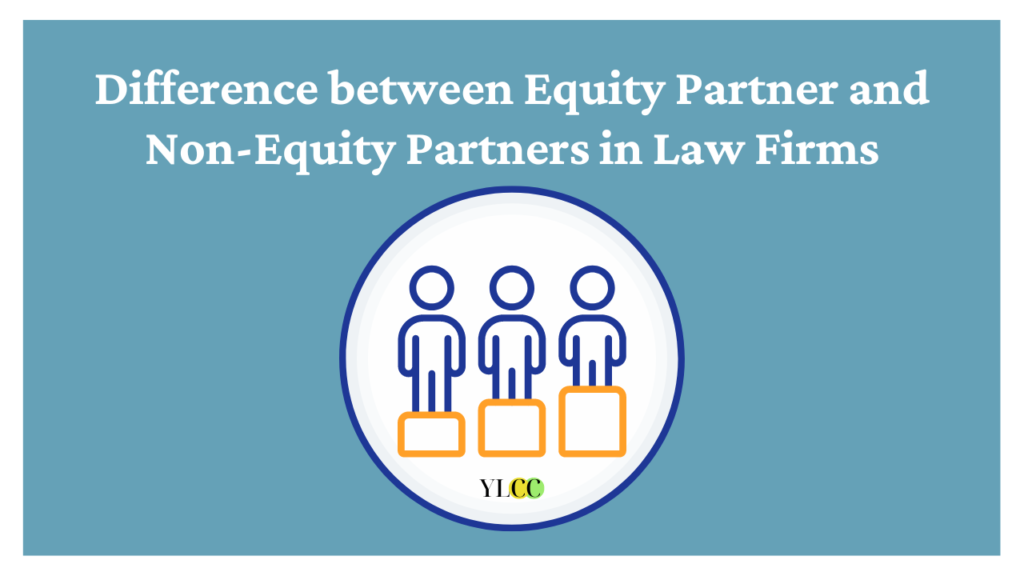
Remember Harvey Specter from Suits?
In one of the episodes, when Harvey got promoted to Senior Partner, he had to furnish a buy-in of 500,000 USD.
Do you ever wonder what that was about?
It is simple, he became an equity partner in the firm Pearson Hardman!
In this article, Team YLCC highlights the concepts of equity and non-equity partners in law firms and the basic differences between the two. Read on!
Who Is An Equity Partner In A Law Firm?
An equity partner, unlike other types of partnership, buys into the company. This means that the partner’s income will come directly from the profit that the company makes. This will usually be as part of their salary or an incentivised bonus. Although this partnership can be established through a partnership agreement, it is different to other partnerships. This is because the partner pays a set amount to buy into the business, and then reaps the financial rewards. However, this is conditional on whether the business continues to grow.
There are two ways an attorney can be invited to be an Equity Partner.
- Buy in– Each firm has a different buy-value. It depends upon, the overall value of the firm, over-head etc. Some firms will offer an attractive loan for an Equity Partner to finance the buy in. Each law firm determines how the buy-in and buy-outs are structured. The terms are included in the shareholders agreement.
- Sweat Equity— This is a unique provision offered by some firms which takes into account the effort and business the attorney brings to the table. The value is determined by the attorney’s practice, originations, and leadership within and outside of the law firm.
Let us note the following aspects of an equity partnership:
- An Equity Partner ‘Buys Into’ The Company
An equity partner, unlike other types of partnership, buys into the company. This means that the partner’s income will come directly from the profit that the company makes. This will usually be as part of their salary or an incentivised bonus. Although this partnership can be established through a partnership agreement, it is different to other partnerships. This is because the partner pays a set amount to buy into the business, and then reaps the financial rewards. However, this is conditional on whether the business continues to grow.
- The ‘Buy-In’ Amount Acts As Capital
Equity partnerships are based on a premise of investment and return. If you are invited, or intend to become an equity partner, the capital you invest to ‘buy in’ is beneficial to the company. This ‘buy in’ is based on predictions that profits will continue to grow for the company. If this is the case, you will see a good return on your investment. Before you buy in however, you may want to get some advice from an investment lawyer. This will allow you to weigh up the risks and benefits of buying into the business. It is accurate to say that the buy in benefits the company immediately. On the other hand, by contrast, a newly minted partner will have to wait to receive monetary benefits
- The Equity Partner Has A Stake In The Success Of The Firm
Because an equity partner buys into the business, they not only have a financial stake in the business, but a personal interest in driving the business forward. There are those that argue that this system motivates partners to work harder for the success of the business, however, if the company stagnates or starts to decline, this can put significant pressure on the partners to return the business to surplus for their own financial security.
Who Is A Non-Equity Partner In A Law Firm?
Non-Equity Partner means an attorney who has the title Partner, Shareholder, Member, Principal or another similar title, who is employed by the firm but has no ownership interest in the law firm.
Non-Equity Partners do not have the same job security as Equity Partners. Non-Equity Partners have more flexibility to where and how they want to work. Most Non-Equity Partners receive a salary instead of partnership distributions. Non-Equity maybe paid by W2 vs. Equity Partners are paid by a Scheduled K-1[1]. Both Equity and Non-Equity attorneys can receive a base salary or draw with bonus. Again, this depends on the firm.
Furthermore, non-equity attorneys usually do not bring enough business to the table necessary to be an Equity Partner. It is easier and less complicated for Non-Equity Partners to move to another firm. Equity Partners and Named Partner have been seldom known to move to other firms. Many attorneys may laterally move to another firm taking their book of business to become an income partner.
Understanding The Ideal Option
Plenty of lawyers still aspire to become equity partners, and for good reason. Equity partnership slots are increasingly scarce, and in a profession that greatly values prestige and status, securing partnership shares is viewed as the pinnacle. The equity partners of a growing and profitable firm can expect to take home an outsized share of the financial rewards. Holding equity also gives a partner a stronger voice in firm governance in the form of voting rights.
Voting rights and partner compensation are often closely connected. For example, one factor that contributes to the equity partnership’s outsized compensation share is origination credit. It is common for firms to structure origination credit formulas to reward equity partners more than their non-equity colleagues. Senior lawyers often pursue equity partner opportunities to receive greater origination credit for their matters. Having input into how the formulas that award origination credit are constructed is an example of the potential value of voting rights.
Weighing the benefits and downsides, non-equity partnership looks relatively appealing in some scenarios. The opportunity to avoid a substantial capital contribution can be a selling point to both the youngest and oldest partners. At the younger end, partners may not yet have built up enough of an investment portfolio to feel comfortable allocating such a large sum to an illiquid investment in the firm.
At the senior end of the spectrum, a departing equity partner who is contemplating one more short stint at another firm before retirement may be attracted to the simplicity of a non-equity arrangement. Partners in this situation have nothing to prove by again becoming equity partners. They may instead place more value on gaining the flexibility to invest in other ways the capital contribution that their prior firm will return to them. The opportunity to avoid assuming liability for the new firm’s debts is another benefit.
For partners in certain niche practices that do not entail a large standalone book of business, non-equity partnership can also make more sense. Practices such as Tax and Trusts & Estates often function as service providers to other practices in the firm, such that the firm’s origination credit formulas may not greatly reward the partners who specialize in these niche areas. A non-equity partnership arrangement that properly values these partners’ contributions may be the right answer.
[1] Schedule K-1 is an Internal Revenue Service (IRS) tax form issued annually for an investment in a partnership. The purpose of the Schedule K-1 is to report each partner’s share of the partnership’s earnings, losses, deductions, and credits
YLCC would like to thank the Content Team for the valuable insights in this article.






